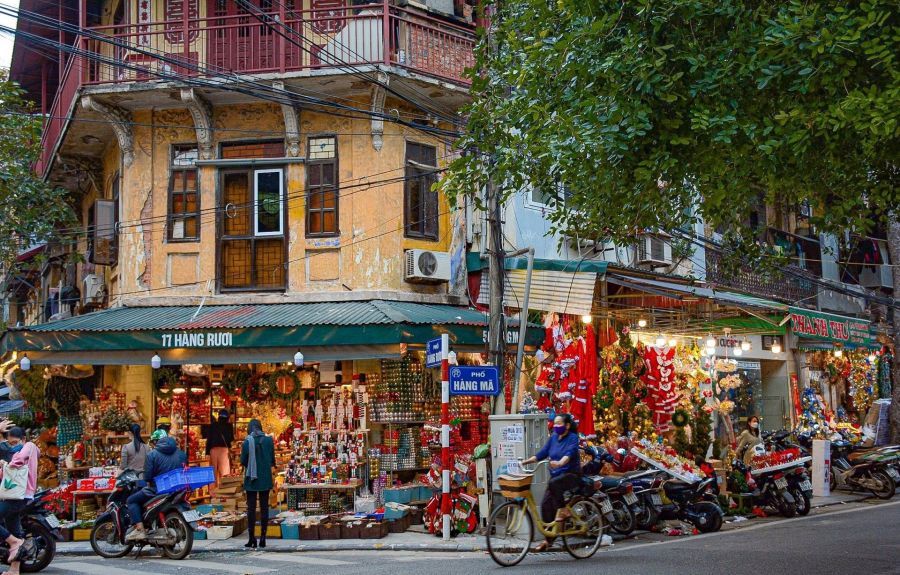Hoa Lo Prison: A Tour To Explore Hanoi’s Past & History
The Hoa Lo Prison can be a grim but fascinating attraction in Hanoi, giving visitors a deep insight into the dark side of the country. That prison plus POW camp is a testament to strength and freedom.
Table of Contents
ToggleIntroduction To Hoa Lo Prison
Hoa Lo Prison is a Hanoi tourist magnet that’s normally thronged with people eager to learn something of the past. It was known as the “Hanoi Hilton” to American prisoners of war, and for Vietnam, “it is a significant milestone in the country’s history.” When visiting the Hoa Lo Prison, you will get an idea of what both the Vietnamese revolutionists and the American bombers had to endure during the Vietnam War. It’s a place that provokes real emotions and requires reflection, which is why this place is on any serious Hanoi itinerary.
History Of Hoa Lo Prison
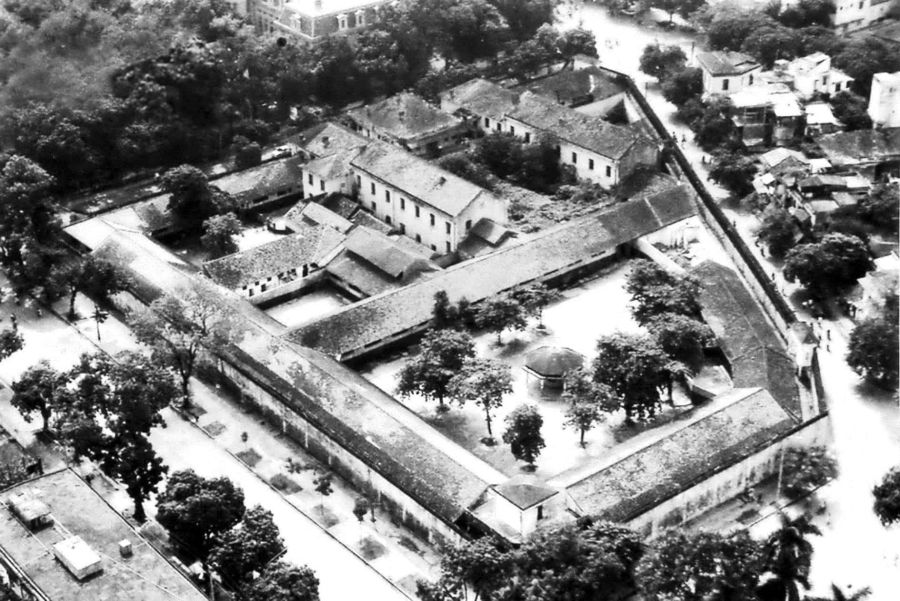
It was originally built by the French in the late 19th century as a jail for Vietnamese political prisoners. Built to accommodate some 450 inmates, it became infamous after being packed with thousands of nationalist fighters. Torture and brutal living conditions were common during colonial rule and later during the Vietnam War years, when American prisoners of war were also held there.
The prison was named “Hanoi Hilton” by U.S. prisoners during the American War. Parts of the prison were destroyed after the war ended in 1975. A museum opened there in 1993 to protect the site’s remaining structures and to tell the story of the place in its layers of history that stretch from atrocities of the colonial era to the warring intelligence agencies of the last century.
Unique Architecture Of Hoa Lo Prison
The architecture of Hoa Lo Prison is unique for its functional and foreboding structures designed for incarceration. The still-standing fraction of the prison is a haunting reminder of its history.
The prison was built by the French with imported, premium materials to ensure the jail’s longevity and to be an impregnable fortress. The architecture is characteristic of the colonial jails at the end of the 19th century. Key architectural features include:
Massive Walls And Gates
The walls of the prison are tall and thick. The walls, made of stone and concrete, were built to block escapes. Great gates, on both sides, including those of the other prisons in the same range, were opened to us, and locked again, as soon as we had passed through.
Guard Towers
While some sections of Hoa Lo Prison may have been destroyed, the alignment of the guard towers along the perimeter was important for reasons of security and for confrontation of the entire prison yard and any prisoners who might wish to attempt an escape.
Cells And Dungeons
The interior of the prison is divided into divisions for prisoners of different categories.
Common Cells
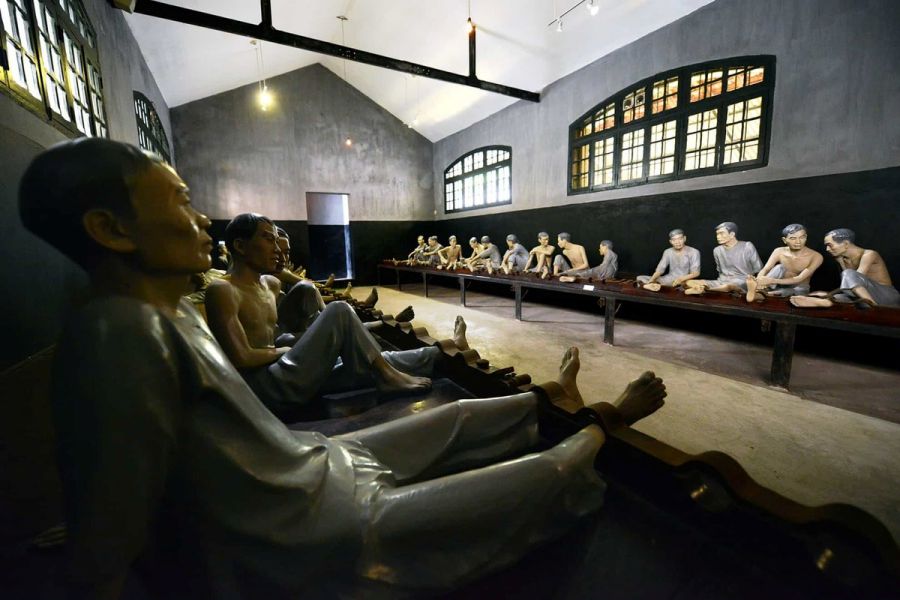
Large rooms where numerous inmates were held in close confinement. Prisoners could easily live in this filthy, crowded environment, providing evidence of their inhumane mistreatment.
Solitary Confinement Cells
Smaller, darker cells used for solitary confinement. Here were the veritable solitaries of the prisoners, the dungeons intended to crush their spirits, and were usually dark, and yet more foul from lack of ventilation.
“Cachot” (The Dungeon)
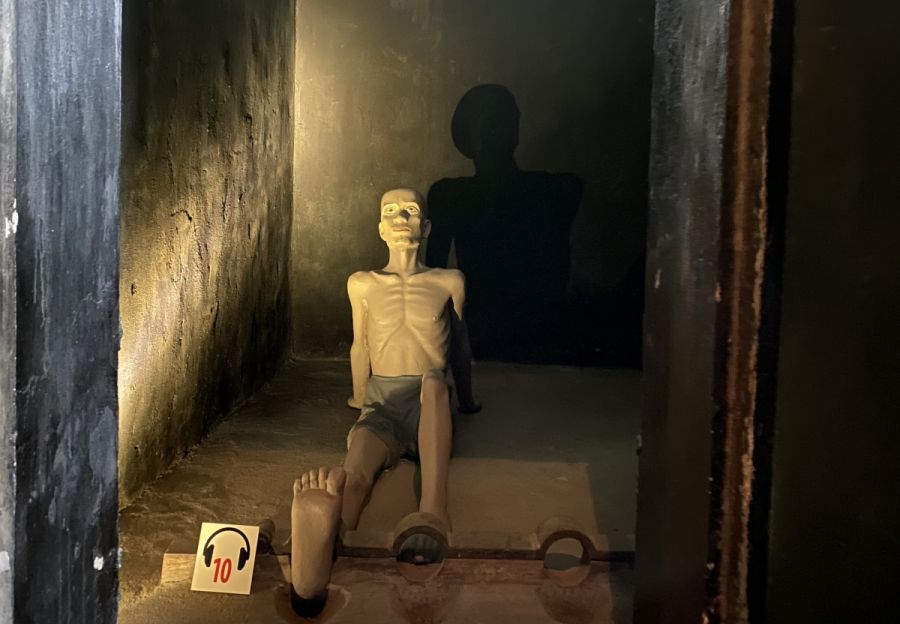
Probably the most notorious part of the prison, the “cachot,” or pitch-dark, windowless, underground dungeon, where those who drew the worst of the worst punishments were held. It was an air of oppression and high-level torture, creating terror and hopelessness. The atmosphere in those cells was also sweet, heavy, and sickly, and it was frequent for prisoners to die chained to the floor or the walls.
Courtyards
The prison had various venues where prisoners could get some sun. It would be somewhere behind walls and under the watchful eye of overseers.
Guillotine Room
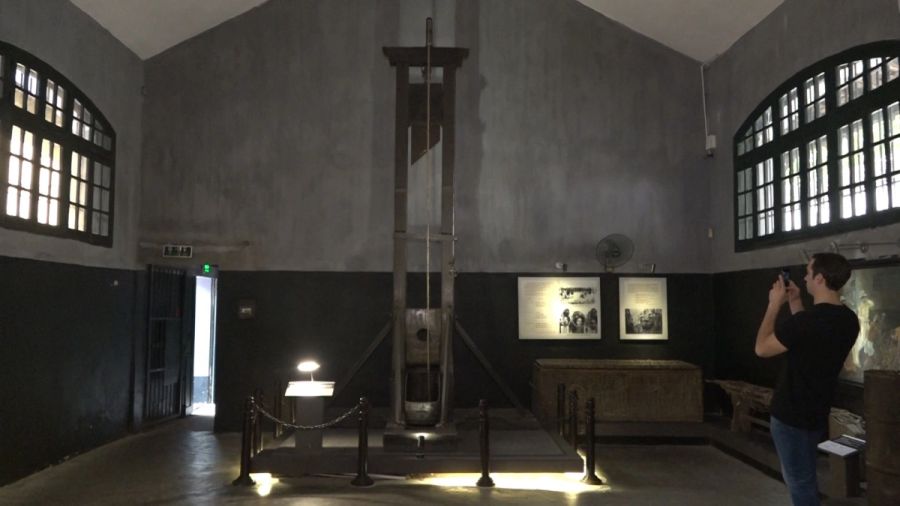
On the prison grounds, there was a guillotine for dispatching prisoners. It is grisly evidence of the colony’s brutality and of how it dealt with Vietnamese rebels.
In general, the remaining prison sections, with their dark corridors and big doors and small barred windows, loudly communicate the oppressive atmosphere that the prisoners must have endured. Walking through these quarters, visitors will get a visceral sense of grim specifics about living behind bars during the French colonial period and the Vietnam War.
5 Cultural Experiences You Shouldn’t Miss
A visit to Hoa Lo Prison offers a unique and multiple perspectives into witnessing several of these specially-designed cultural activities, whose aim is to foster a deeper appreciation of Vietnamese history and its lasting spirit.
Explore Prison Cells
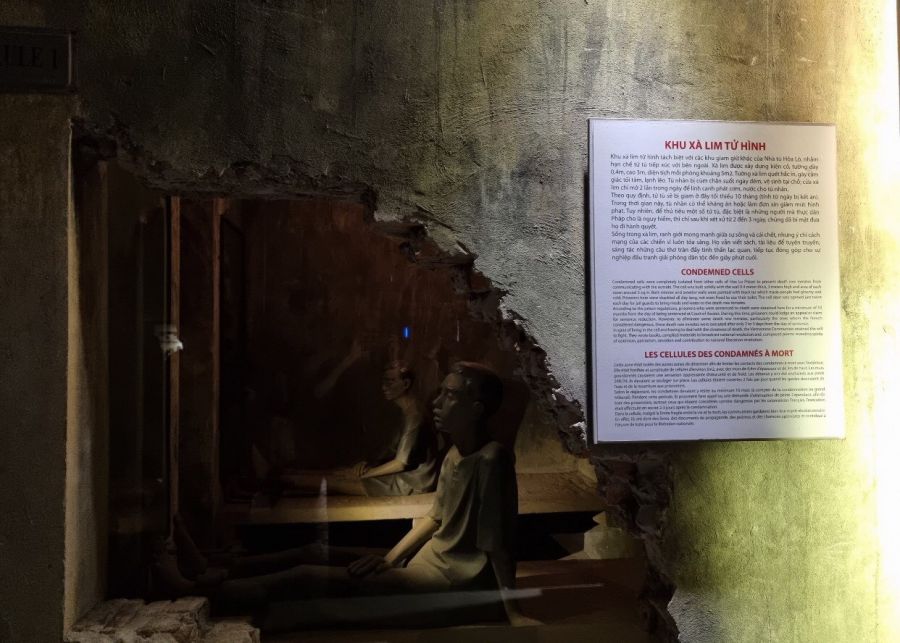
Enter the preserved prison cells where Vietnamese revolutionaries and political prisoners were held in hellish colonial conditions. The loathsome, dark-colored cells still have their old iron grates, solid wood doors, and hard stone beds with leg manacles. The cells with solitary confinement rooms are particularly chilling, and the visitor’s heart sinks with an icy grip at the feeling of isolation and punishment that were imposed there. When you walk through these spaces, you get a visceral sense of the enormous sacrifices made by those who fought for the independence of Vietnam.
Watch The Historical Documentaries
The museum houses a series of multimedia stations that broadcast short documentaries, black-and-white footage, and interviews with survivors. These audio-visual portraits bring the story of Hoa Lo Prison to life with a compelling narrative. Many of them were in Vietnamese and English, so it’s not too hard for non-Vietnamese speaking people to join in the event.
These presentations are a great opportunity to hear about significant periods in Vietnamese history and to hear the story of the prison’s transformation from French colonial rule then through the Indochina War to the American War.
Visit the American POW Exhibition Area
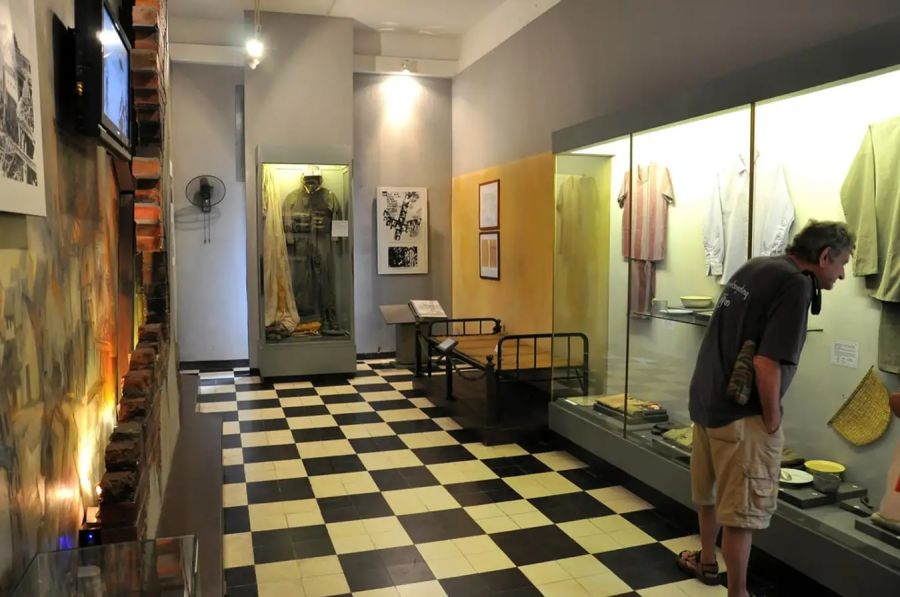
Hoa Lo Prison was a notorious detainee facility for captured American pilots and servicemen during the Vietnam War. The exhibit includes authentic reconstructed prison cells, personal items of American POWs, photographs, and rarely seen documents.
Among other things, visitors will be able to view uniforms and chess pieces formed from scraps, as well as a reconstructed kitchen and dining area. This is riveting stuff for those with an interest in the relationship that has existed between America and Vietnam. It’s a balanced, humanizing show that’s well worth the trip to see all sides of the conflict.
Admire The Statue of The Women Prisoners
At the end of the tour, visitors encounter a fierce sculpture commemorating female revolutionaries who were imprisoned at Hoa Lo. The women of Vietnam add to their long history of fighting and their indomitable bravery in the war of resistance against the crusade for national salvation. Pictures and biographies of some of the women are posted on the wall next door.
Their stories are tales not only of courage but of the profound emotional devastation that incarceration imposed on families and communities. A moving memorial honoring the many faces of the fight for freedom in Vietnam.
Reflect At The Memorial Area
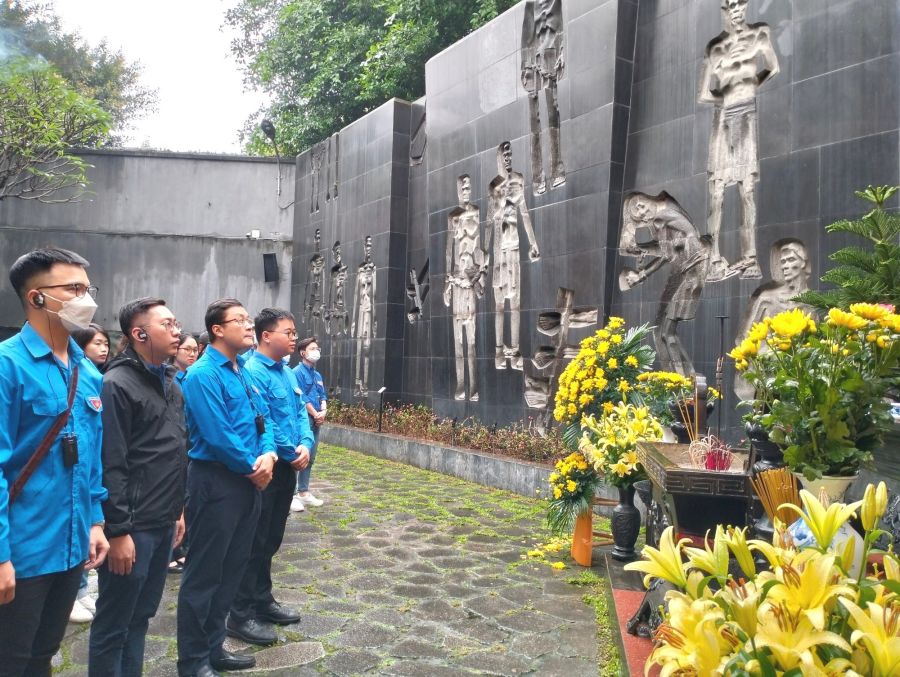
A quiet memorial space at the museum honors the Vietnamese nationalists who died in prison. But the exact spot where the image was taken is also designed to be a space of contemplation and a remembrance of the men and women who died for Britain’s freedoms.
It’s a stark, somber reminder of the price of war and of tyranny for ordinary people. For many visitors of the region, there are deep emotions evoked, as it is a site for meditation and reflection.
Hoa Lo Prison Entrance Fee
The entrance fee is 30,000 VND per person.
The following personnel do not need to pay for the ticket or enjoy the policy of priority:
- People under the age of 15.
- People with severe disabilities.
- Members: National Prison Liaison Committee, Veterans Association, Resistance Liaison Committee.
- People with revolutionary contributions.
The following cases entitle you to 50% off your ticket:
- Pupil (evidence of pupil/student cards may be requested).
- People with severe disabilities.
- 60-year-old Vietnamese.
In addition, headset commentary services are 50,000 VND per headphone.
Hoa Lo Prison Opening Hours
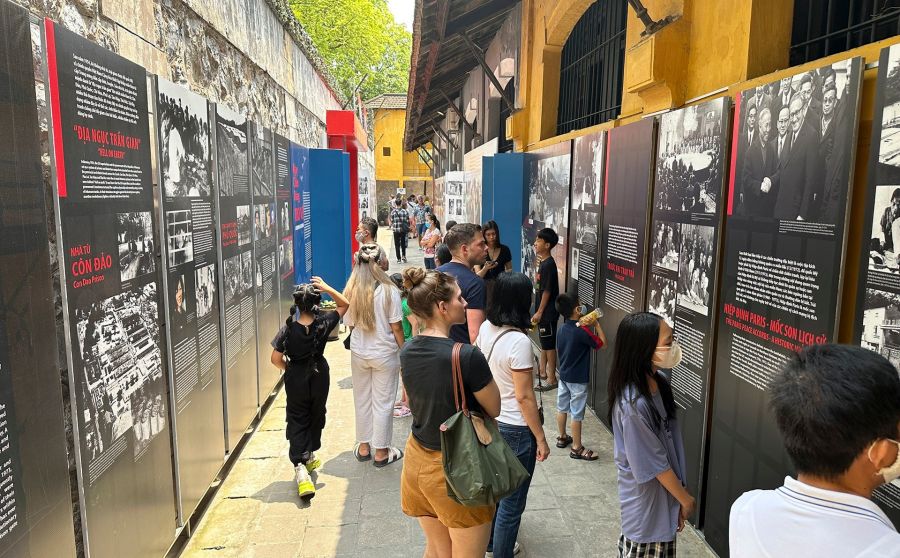
Hoa Lo Prison is open for most days of the week to tourists.
- Daily: 08:00 AM – 05:00 PM
- Closed for lunch: 11:30 AM – 01:30 PM.
Best time to visit:
Normally, the best time to visit Hoa Lo Prison is 08:00 to 10:00 AM and 02:00 to 04:00 PM. At this time, it’s less noisy, less crowded, more reflective, and more restful. Visiting during Hanoi’s high tourist season (October through April) might result in slightly larger crowds, but the museum is, overall, well-run. Try to avoid coming in the heat of the day in the summer months (May to September).
How To Get To Hoa Lo Prison
Hoa Lo Prison is situated conveniently in the center of Hanoi, meaning that it is straightforward to get to from many tourist areas, such as Hoan Kiem Lake. The following are the ways you can get there.
- By taxi or ride-hailing app: Perhaps the easiest method to get there, particularly if you are a large group or have little time. Taxis are prevalent across Hanoi, and Grab and Xanh SM may often provide better rates.
- By cyclo: Passengers sit in front of cyclos, which are three-wheel bike taxis. This is a fun way to see Vietnam and its attractions.
- By motorbike taxi: It’s the way to go if you want to reach your location quickly. GrabBike is a comparable option; however, it works via the Grab program.
- Public bus: Make use of Hanoi’s regular bus service, which is the slowest and cheapest approach to travel.
- Walking: If you are staying in the Old Quarter or by Hoan Kiem Lake, Hoa Lo prison is an easy walk. It enables you to wander some local streets and culture.
The price and time to travel are shown below:
| Types of transport | Price | Travelling time |
| Taxi or ride-hailing app | From Old Quarter: 30,000 – 60,000 VND | From Old Quarter: 5 – 10 minutes (depending on traffic) |
| From West Lake: 70,000 – 120,000 VND | From West Lake: 15 – 25 minutes | |
| Cyclo | 50,000 – 100,000 VND | 10-20 minutes |
| Motorbike Taxi | 20,000 – 40,000 VND | 5-10 minutes |
| Public Bus | 7,000 – 10,000 VND per ride | Varies greatly depending on your starting point and traffic |
| Walking | Free | 10-20 minutes from Hoan Kiem Lake or the central Old Quarter |
Things To Know Before Traveling To Hoa Lo Prison
To get the most out of your trip there, here are some good tips on visiting Hoa Lo Prison and similar destinations with respect and learning:
- Dress respectably: Hoa Lo Prison is a historic monument with a dark history. There is no formal dress code, but it’s a good idea to dress conservatively as a mark of respect. Avoid overly revealing attire.
- Photography: Non-flash photography is permitted in the museum, observing other visitors and not when prohibited by signage, in a low-light area, for example. Some displays may be more fragile, so please use discretion.
- Time commitment: Expect to be at the museum for a minimum of 1.5 – 2 hours to get the full experience. That should give you time to read all the exhibits, see all the artifacts, and contemplate the history.
- Audio guide rental: The museum has audio guides. These can offer more in-depth perspectives, or simply more context that you might not absorb just looking on your own.
- Pair with nearby attractions: Hoa Lo Prison is centrally located. It’s also easy to pair a visit with other nearby sights, such as Hoan Kiem Lake, St. Joseph’s Cathedral, and the Vietnamese Women’s Museum, for a well-rounded day of sightseeing.
Final Thoughts: Is Hoa Lo Prison Worth Visiting?
Hoa Lo Prison is still a serious historical site, giving you a glimpse of Vietnam’s history. It’s a sobering reminder of what the French colonial period meant for the Vietnamese and a place to contemplate freedom and human perseverance beyond Vietnam. Book your insightful visit to Hoa Lo Prison today and explore other fascinating tales of Hanoi’s past with SeniWorld!











